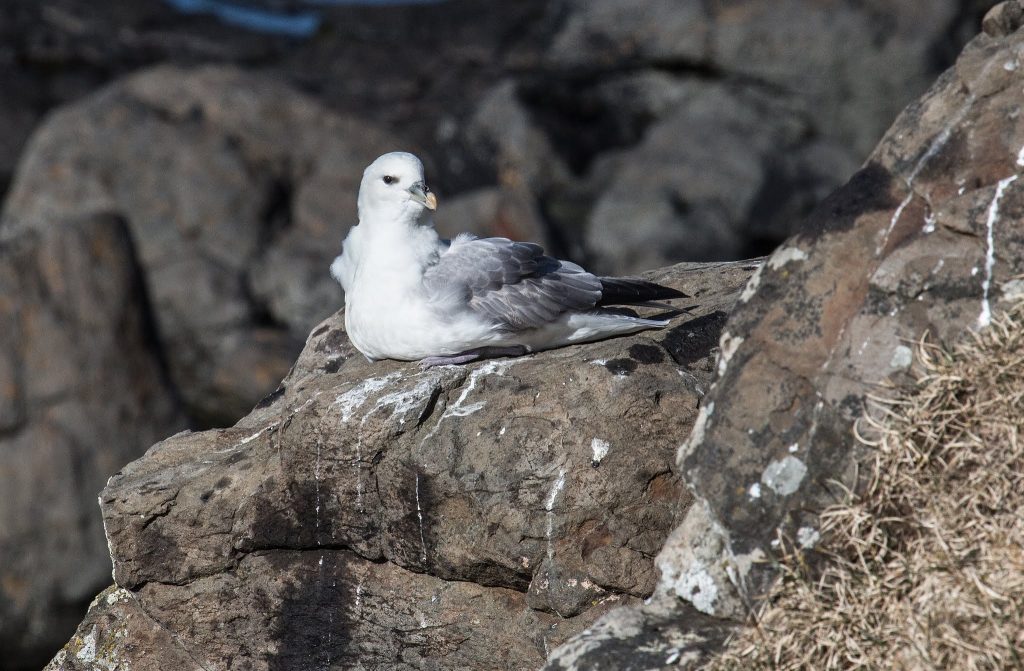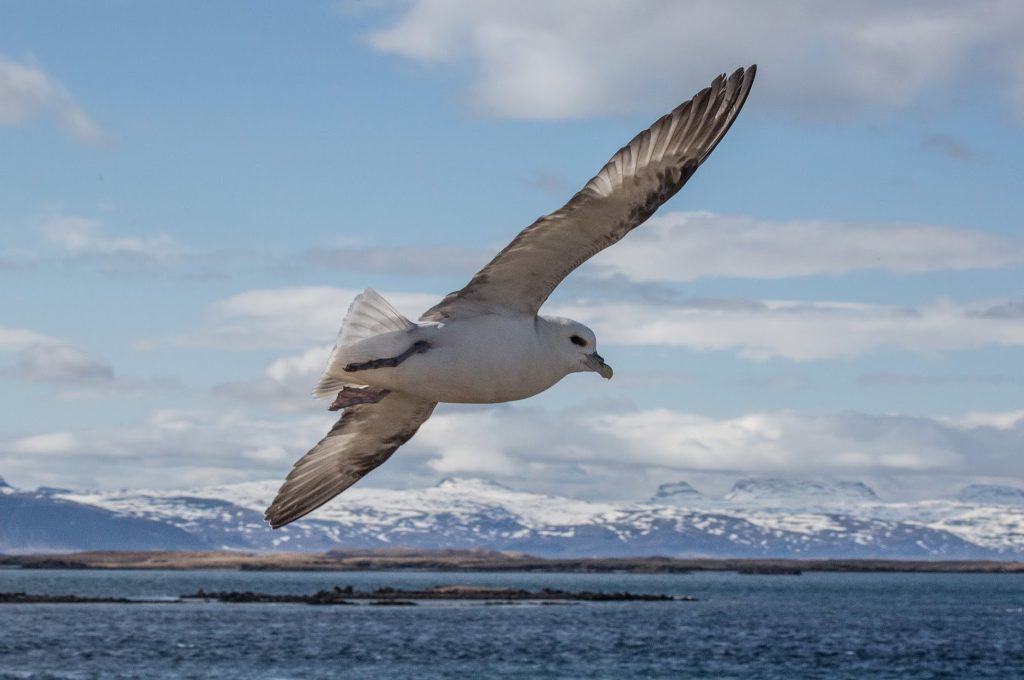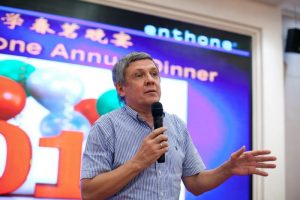Komplexität - complexity:
Eissturmvogel auf einer kleinen Insel Islands /
arctic fulmar on a small icelandic island
Einige Beispiele für Komplexität und Nicht-Gleichgewicht in einem Foto /
Several examples for complexity and non-equilibrium in just one photo
Das Foto entstand (übrigens ohne Teleobjektiv! so nah war der Eissturmvogel!), als ich mit meiner Lebensgefährtin im frühen Frühjahr ganz allein auf der Insel Flatey (Island, im Breiðafjörður) einen Tag verbrachte. Es vereinigt auf einen Blick viele Beispiele für die Komplexität in unserer Welt:
– der komplexe Körperbau (besonders der Schnabel mit Röhrennase, die Federn)
– der Flug im Wind
– die Struktur des Fjords mit den Inseln und der Landschaft an den Küsten
– Schnee in höheren Lagen
– die Wolkenformationen
– das Kräuseln der Wellen im Wind.
All dies ist komplexe Dynamik, im Sinne von Prigogine sind es „dissipative Strukturen“, alles wird angetrieben durch die Sonne – thermodynamisch betrachtet „Nicht-Gleichgewichtssysteme fern vom Gleichgewicht“:
– Wolken und Wellen verändern sich ständig, ebenso die Schneebedeckung jetzt im Frühling;
– das Schweben des Vogels im Wind ist nur möglich, weil der Wind weht, die Sonne erzeugt im Wechselspiel mit den der Erdoberfläche das Wetter;
– der Vogel kann nur deshalb von links nach rechts schweben, weil er vorher gegen den Wind aktiv von rechts nach links flog, wofür er mit seiner Nahrung Energie getankt hat;
– warum fliegt er immer wieder so an uns vorbei und schaut uns an? weil nur 2 Meter unter uns auf einem Felsvorsprung sein Partner auf dem Nest sitzt und brütet (Foto unten): er mißtraut uns; wir sehen hier ein Nicht-Gleichgewichts-Wechselspiel zwischen Vögeln und Menschen; und wir konnten nur hier sein mit einem ziemlichen Energieaufwand, nicht zuletzt in unseren kleinen am Vortag vorbereiteten Imbißpaketen;
– nicht zu vergessen die Dynamik des Aufbaus der Meeres- und Landschaftsstrukturen, die wir hier sehen: klassische Nicht-Gleichgewichts-Systeme.
Und ist das nicht alles unglaublich schön, läßt uns das nicht endlos staunen über die Schönheit der Natur, der Welt, in der wir leben dürfen?
The photo was taken (by the way, without a telephoto lens! that’s how close this Arctic Fulmar was!) when I spent a day alone with my partner on the island of Flatey (Iceland, in the Breiðafjörður) in early spring. This picture unites at a glance many examples of the complexity in our world:
– the complex body structure (especially the beak with tube nose, the feathers)
– the flight in the wind
– the structure of the fjord with the islands and the landscape on the coasts
– snow at higher altitudes
– the cloud formations
– the rippling of the waves in the wind.
All this is complex dynamics, in Prigogine’s sense these are „dissipative structures“, everything is driven by the sun – in thermodynamic terms „non-equilibrium systems far from equilibrium“:
– Clouds and waves are constantly changing, as is the snow cover now in spring;
– the bird’s hovering in the wind is only possible because the wind blows, the sun creates the weather in interaction with the earth’s surface;
– the bird can only hover from left to right because it previously flew actively against the wind from right to left, for which it has taken up energy by feeding;
– why does it keep flying past us like that and looking at us? because only 2 metres below us on a rocky outcrop its mate is sitting on its nest and brooding (photo below): the bird has no trust in us humans; so here we see a non-equilibrium interplay between birds and humans; and we, the humans, came here only by using a lot of energy, the smallest part of it the lunch and evening meal package we had prepared beforehand;
– I should not forget to mention the dynamics of the build-up of marine and landscape structures that we see here: classical non-equilibrium systems.
And isn’t it all incredibly beautiful, doesn’t it make us endlessly be amazed about the beauty of nature, of the world in which we are allowed to live?


